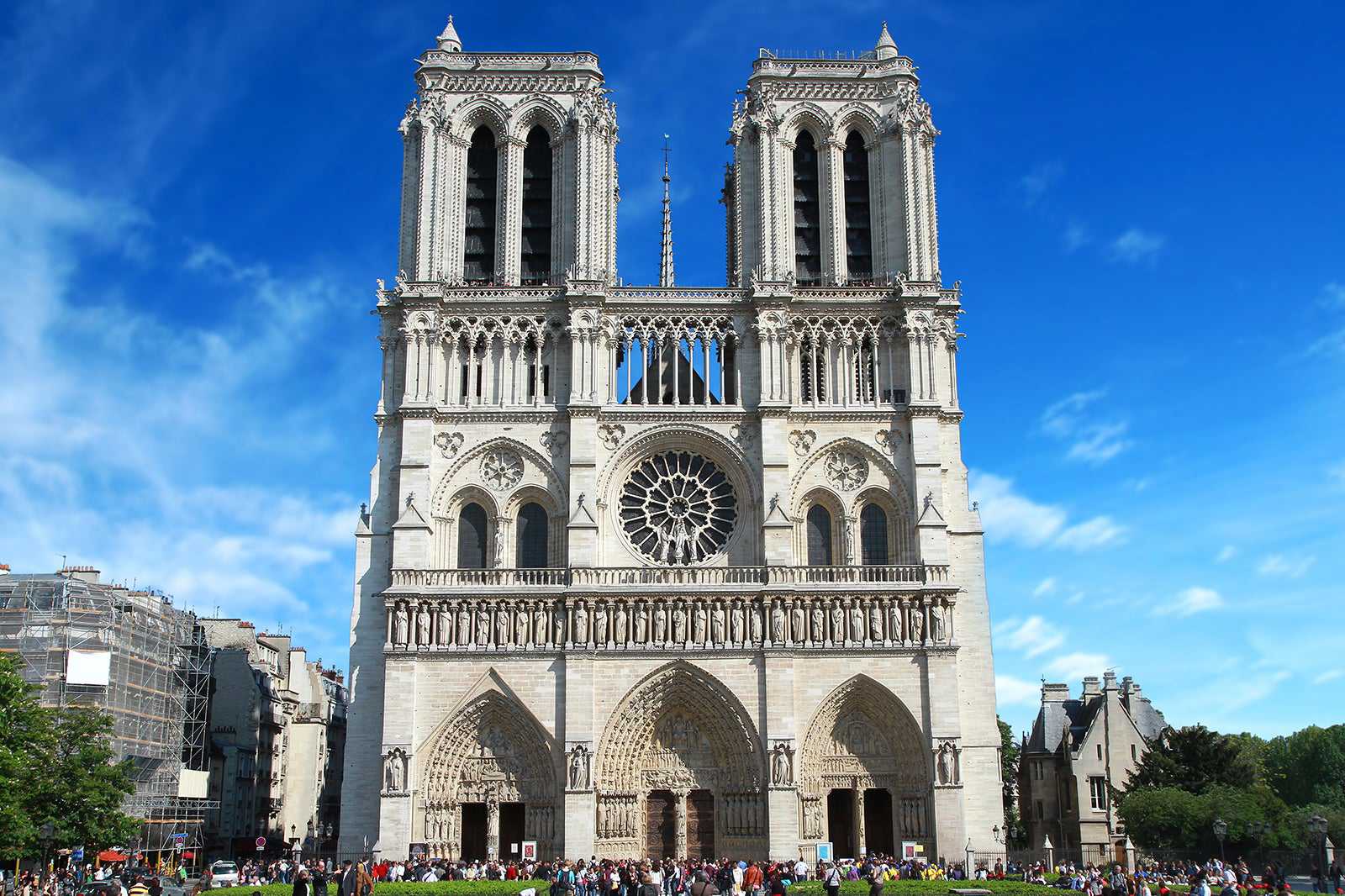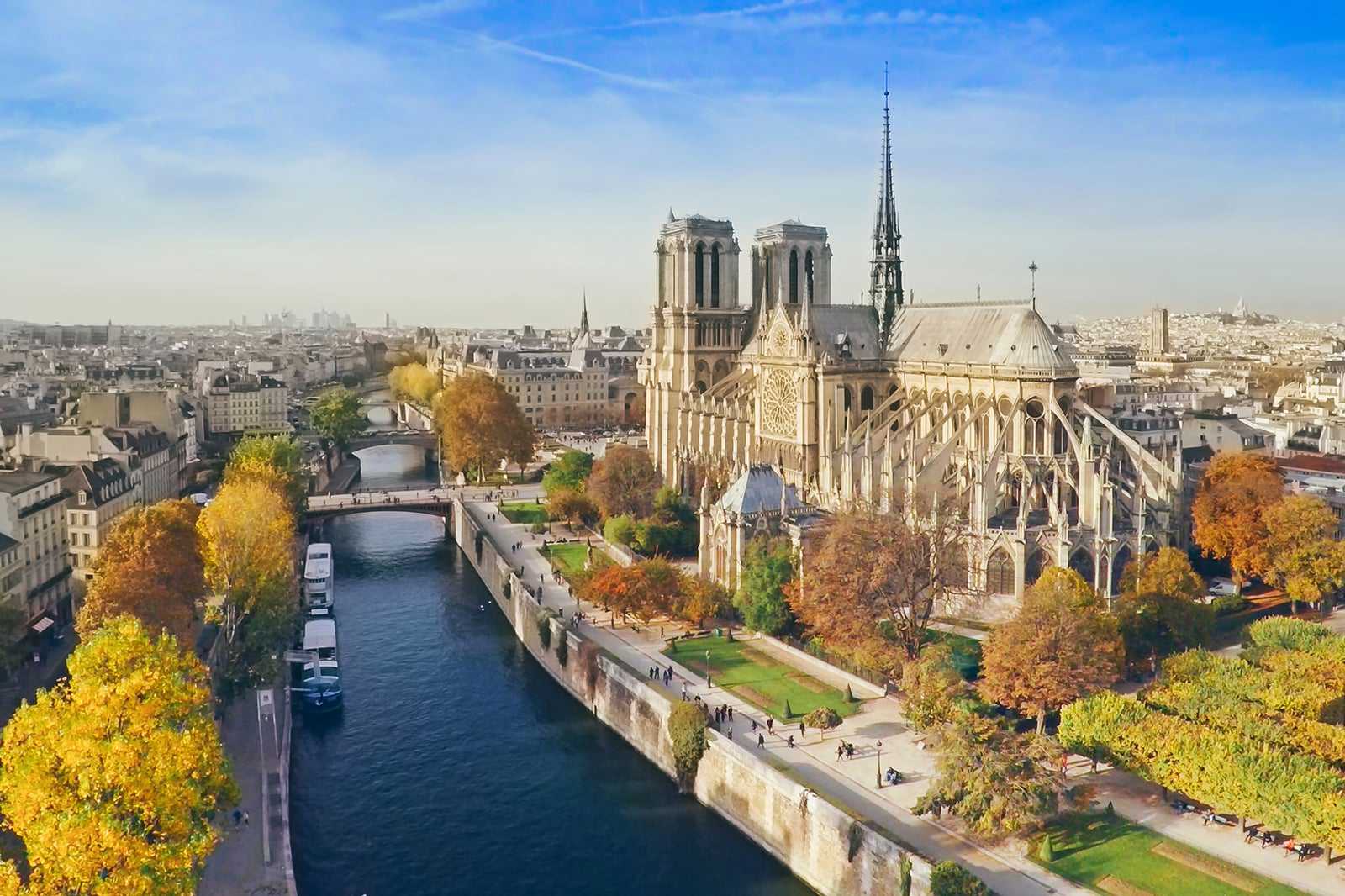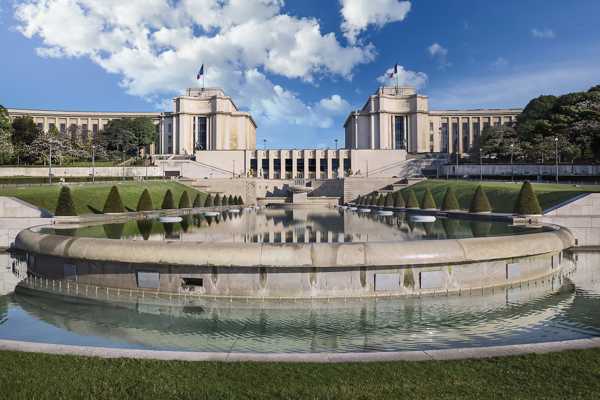The Notre Dame Cathedral is one of Paris' best-known structures with pride of place on the Île de la Cité, in the middle of the River Seine. Sadly, it was severely damaged by a fire on 15th April 2019, which destroyed most of the roof, including the iconic 69-metre-tall spire. Fortunately, being mostly made of stone, the majority of the structure remained relatively undamaged.
A special law was passed in France in July 2019 to ensure that the cathedral would be restored to its original design, with the reconstruction expected to be completed in time for the 2024 Summer Olympics in Paris.
Before the fire, the Notre Dame Cathedral (or Cathédrale Notre-Dame de Paris) was an icon of Paris and France as a whole. It was arguably best known for its fictional hunchbacked resident from Victor Hugo’s 1831 novel and Disney’s 1996 movie adaptation – one of about 13 movie adaptations throughout the years, joining several TV versions, theatre productions, radio dramas and even comic books and ballets to secure the building’s place as a cultural cornerstone.
Notre Dame Cathedral in Paris - one of the highlights of 14 Most Instagrammable Places in Paris and 7 Best Things to Do in Winter in Paris (Read all about Paris here)

A brief history of Notre Dame Cathedral
The location of Notre Dame Cathedral, which is at once right in the heart of Paris but separated from it by the Seine, has always been a significant spot. The presence of the Pillar of the Boatman – the oldest monument in Paris – suggests that the Île de la Cité once hosted a Gallo-Roman temple for Jupiter. The temple was replaced with an Early Christian basilica in about the 4th century AD when Christianity reached France.
Over the centuries that followed, the basilica was remodelled, upgraded to a cathedral, enlarged, and further remodelled, but it remained too small a structure to support the rapidly growing population of Paris. In 1160, it was decided that a new, significantly larger, Gothic-style church would be built. Construction of what we now know as the Notre Dame Cathedral began in 1163, reusing much of the materials from the now-demolished old one.
The dimensions of the new cathedral were ambitious, to say the least. At 128 metres long, 48 metres wide, and 35 metres tall (not including the spire), it took 182 years to complete, with work finally ending in 1345. Its sheer scale required the use of dozens of single-arch flying buttresses to support its own weight – a revolutionary architectural feature at the time. When it was finished, it was the tallest structure in Paris – a title it held until the Eiffel Tower was completed in 1889.
Over the centuries, the Notre Dame Cathedral has been the site of coronations, famous weddings, riots, beatifications, rededications, wars and more, not to mention the infamous 2019 fire. Some of these events left their mark in the limestone structure, as has Paris’ air pollution. However, the building has undergone several renovations throughout its history, with new and remarkable features added from time to time but the original style kept broadly the same.

What are the highlights of Notre Dame Cathedral?
The Notre Dame Cathedral dominates the south-eastern corner of the Île de la Cité, with a beautiful garden surrounding it as well as noteworthy statues of, among others, King Charlemagne, and Pope John Paul II. The entrance to the island's 2,000-year-old crypt is also nearby.
On the cathedral itself, the most iconic features include the 10 bells – the 2 largest in the south tower and the 8 smaller ones in the north tower, along with several smaller secondary bells. The largest of the lot is also the oldest, cast in bronze in 1686.
The famous rose windows are also worth seeing. The oldest is in the west wall and dates from around 1225, with the extraordinarily intricate north window added in 1250 and the massive, 12.9-metre-diametre south window added in 1260.
Other noteworthy features of the Notre Dame Cathedral include the sombre above-ground tombs and the massive pipe organ. Some of the relics preserved here include the Crown of Thorns and both a sliver and a nail from the true cross.

Good to know about Notre Dame Cathedral
Because of the 2019 fire, the Notre Dame Cathedral is currently a building site, surrounded by scaffolding and inaccessible to the public. It is planned to reopen in mid-April 2024. While you’re in the area, the nearby Sainte-Chapelle is well worth checking out, being similarly beautiful and nearly as old as Notre Dame.
Located in the 4th arrondissement of Paris, the Île de la Cité and cathedral are easy to get to. The Cité Metro station is very close by while buses 21, 27, 38, 87, 96 and others as well as the RER B and C trains stop at the Gare de Saint-Michel – Notre-Dame, just over the bridges to the south. There are a few small parking garages on the island and nearby, but it’s not recommended to try driving in the centre of Paris as the narrow streets are often jammed.

Notre Dame Cathedral in Paris
Localização: 6 Parvis Notre-Dame - Pl. Jean-Paul II, 75004 Paris, France
Telefone: +33 (0)1 42 34 56 10



















